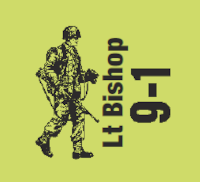
This is the first in a couple of short articles examining Slopes in ASL. For such a short section of Kampfgruppe Peiper, later added into Pegasus Bridge, there seems to be a lot of confusion around these rules. What’s worse, this confusion has led many players to skip scenarios using Slopes. This aversion has further led map designers to shy away from adding Slopes to ASL maps which is a shame. As we will see, adding Slopes can significantly alter the way a map or map board will play.
Slopes are covered in P2 and then recreated in Q3. The Q3 rules are a verbatim copy of the P2 rules. For this article (and all future articles in this series) I will refer to P2. Just know that Q3 exists and these articles cover it as well. Also, for ease of explanation, I will refer to slope markings as “eye-lashes”. To me, they look like eye-lashes and I think it helps me to think about who is “Up-Slope” and who is “Down-Slope”.
Before We Start
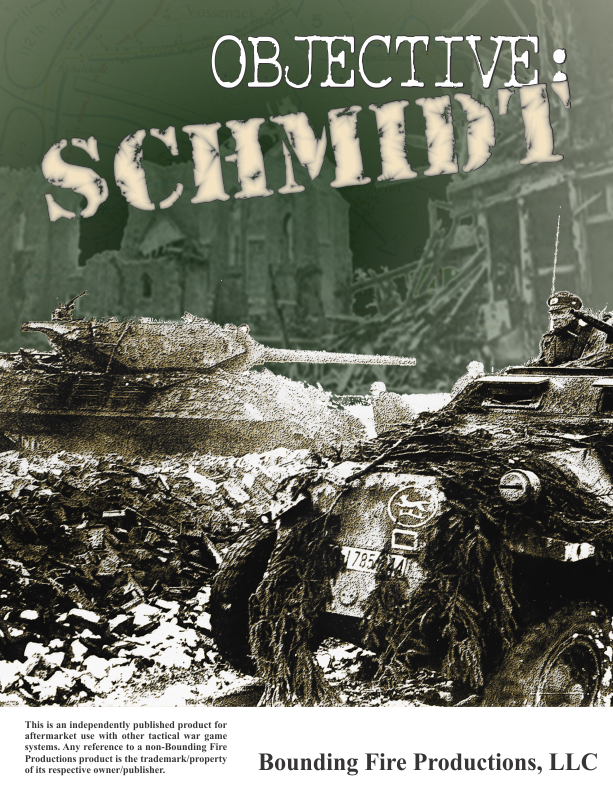
I would be remiss here if I did not point out Chas Smith’s excellent article Slopes in ASL. This article appeared in Bounding Fire’s Objective Schmidt. Chas’ article covers Slopes more deeply than I plan to in these articles. I will touch on everything Chas already has, but the series of articles I have planned will be more bare bones than Chas’ existing work. I encourage you to read his article if you haven’t already. It is an outstanding article on the topic.
Rules Dive
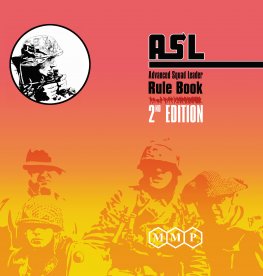
When determining LOS, first determine whether the Firer or Target are “Up-Slope” or “Down-Slope”. To be “Up-Slope”, the “eye-lashes” have to be in an adjacent hex, making the units hex the “eye”. The “eye-lashes” are not in the unit’s hex. To be “Down-Slope”, the “eye-lashes” will be in the unit’s hex.
Being in an “Up-Slope” or “Down-Slope” Location is not enough. For the Slope to matter, LOF/LOS must cross a Slope hexside. If the LOF/LOS does not cross a Slope hexside, inclusive of vertices, Slope rules are NA. If neither the originator nor the target occupies a Slope Location, Slopes are NA to LOS/LOF. Intervening Slope hexes are NA to the LOF/LOS regardless of whether Slopes otherwise apply to LOF/LOS [EXC: Fire Lanes; I will cover these in a later article].
An “Up-Slope” unit is ¾ of a level higher than the base level of the occupied hex. An “Up-Slope” unit can trace a LOS across a Slope hexside of its hex to a lower elevation–including across a hill Crest Line–and over LOS obstacles and Hindrances whose height is less than the Up-Slope elevation of the viewing unit. As we will see in the following examples, this can make an “Up-Slope” position powerful. Being “Down-Slope” can provide TEM and Fire Lane DRM in certain instances. I will cover this in a later article.
Easier Examples
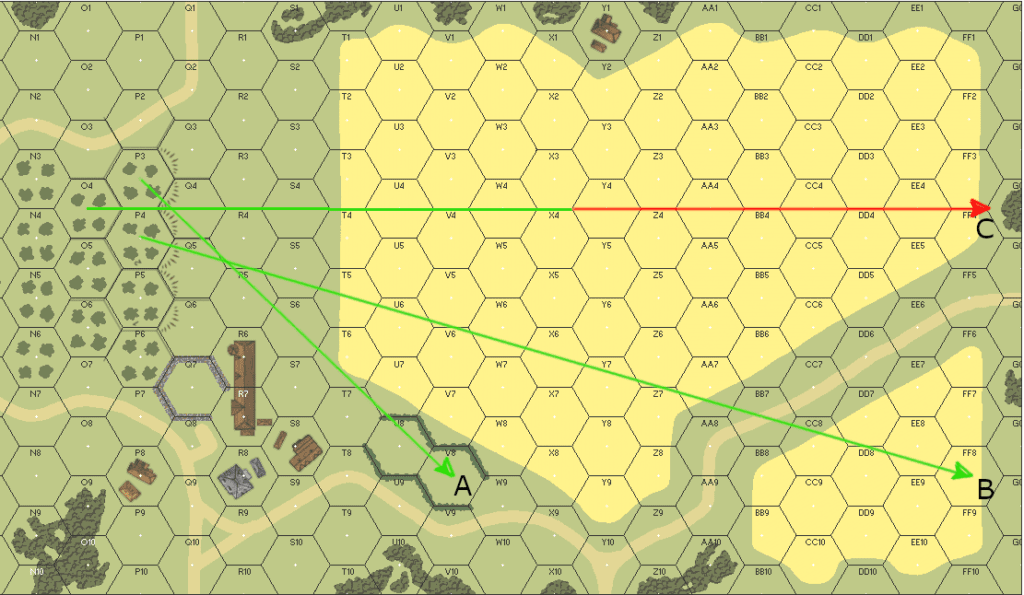
These first three examples appear in figure 1. Each portion of the LOS depicted in green is clear. Let’s examine each of these in turn.
LOS A clear because hex P3 is “Up-Slope”. Notice how the LOS to V8 crosses over the Slope “eyebrows” and how the “eyebrows” radiate outward from P3. Since a unit “Up-Slope” is ¾’s of a level above the base level, a unit in P3 is at level 0.75. This allows it to see over all half-level LOS obstacles such as the hedge along the U7/U8 hexside. If an enemy unit were to move through V8 using First Fire Non-Assault Movement (FFNAM), it would also be subject to First Fire Movement in the Open (FFMO). LOS B is clear for the same reason. The Grain is a half level LOS Hindrance. LOS from P4 can see over all the Grain. Grain in the target Location will cancel out FFMO, but FFNAM would still apply if applicable. None of the other Grain hexes along the LOF affect this shot.
LOS C is a much more complex example. First, since Q4 is not in a Slope hex, it is neither “Up-Slope” or “Down-Slope”. The Slopes in P3/P4 do not affect LOS. Now the LOF from Q4 suffers the Grain Hindrances. Units in the hexes covered by the Green portion of the LOF can be fired upon at increasing Hindrance IFT DRM. Those portions covered by Red will be out of LOS (≥ 6 Hindrances).
More Complex Examples

For this next set of examples. Refer to figure 2. Again, the LOS in green are all clear. A unit in L4 is not “Up-Slope” along LOS A. it cannot see beyond K4 along this LOS. A unit in L4 is “Up-Slope” along all the Green LOS and can see over the level 3 Crest line. LOS to D9 (E) passes over the Orchard in G8. The Orchard creates Blind hexes normally. Take a moment to see if you can figure out how many.
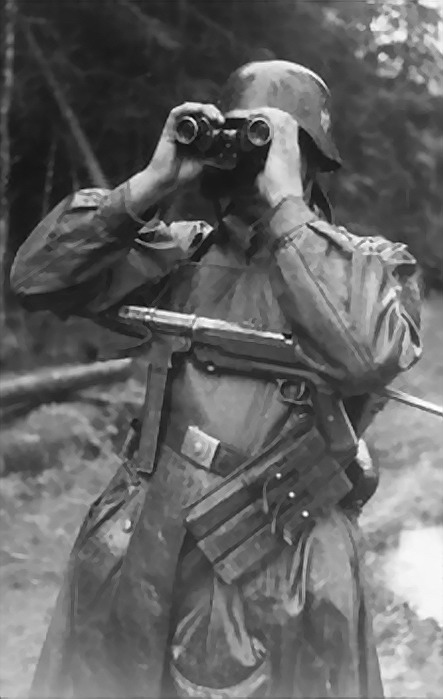
The “top” of the Orchard is at level 1, thus it creates one Blind hex. In addition, the Orchard is 6 hexes away from L4. Dividing 6 by 5 (FRD, A6.41) adds a Blind hex. Finally, since level 3 is 1 full level greater than level 2, the minimum required to see over the level one LOS Obstacle, it reduces the number of Blind hexes by 1. This LOS has one Blind Hex in F8. Notice, the extra ¾ elevation in L4 played no part in calculation of Blind hexes.
LOS B is an interesting case. A unit in L4 is still “Up-Slope” as the LOS passes through the Slope hexside vertex. The top of the H4 Woods hex is at Level 3. Relative to the Slope hex, it will create 1 Blind hex meaning F4 and E4/E5 are in LOS. LOS to D4 and beyond would be open but for the Orchard in E4. The top of the E4 Orchard is at level 2. Range to the Orchard is 7, creating two Blind hexes. This time, there is no reduction for height over the obstacle so the final Blind hex Count is 2. How ever, the drop-off to level 1 in B4 ADDS an additional Blind hex per A6.43. The Orchard blocks LOS to B3/B4. LOS to A4/A5 would be Open. Those A-row hexes are 4 hexes away from the E4 Orchard and thus, no longer in an E4-created Blind hex.
Conclusion

From these brief examples, I hope you can see how Slopes can entirely change the feeling of a map. LOS that were previously heavily hindered are suddenly -1 FFNAM shots. Being able to see over Crest Lines from “interior” hill hexes adds a new level of dynamics to approaching “hill-top” defense scenarios. And frankly, they really aren’t that hard to grasp if you’re willing to spend 10 minutes looking at a few examples. Are they a layer of chrome? Sure, but not one that is hard to understand and for a slight increase in “complexity”, they bring a whole new dynamic to the game and map design.
Up next will be Slopes and Movement. See you again in two weeks. – jim
ver 1.1


Slopes are a great addition to the ASL rules, breaking up the table top effect of ASL. The rules are quite manageable, particularly by ASL standards.
I agree Darrell. I think they are a big addition to the game for such a small overhead. I have another Slopes article next week. This next one covers movement.
Another great article Jim – thank you.
Only way to master these are to play a few scenarios – do you have any suggestions for the Friday club nights?
Rule A6.43 not B6.43 should be referenced in “More Complex Examples” third paragraph, third sentence from the end where you are discussing the number of blind hexes for LOS B.
Please remove my comment here if you make the correction.
Thanks
Thanks for the comment. I have made the change. I appreciate the input. I left your comment to give credit for finding the mistake.
Thank you for this. “Demystifying” indeed.
Thanks for the great articles. The are very useful.
We are currently playing Pegasus Bridge, where Slopes play a role. We come up problem with the interaction between the Slopes and the Grain you said:”The Grain is a half level LOS Hindrance”. Where is that said? We could find only references that Grain is a hindrance to “same level” LOS and isn’t Slope still at the same level?
In looking, I don’t know if it is every strictly defined as 1/2 level now that you call me on it. It is an LOS hinderance to “same level” and being up slope is no longer “same level”. An up-slope position is 3/4 higher than the “base” level of the hex so units can see “over” the grain. — jim
First, let me start by saying that thematically I agree that Grain (plus Wreck, Brush, Marsh, Crag, Graveyard) should be a half – level hindrance. However, I have trouble finding support on that on the rules.
The solution of explaining it by rounding the ¾ level upwards and not count is as not “same-level” would then prevent Fire Lanes (A9.22), Light Wood (B35.2) blocking the LOS from/to Slopes and possible also in-season Orchards (B14.2) blocking the LOS from/to Slopes. In addition rounding up is typically done only as specifically mentioned exception.
Best possible explanation so far has been F4.51 “for deir LOS purposes, brush, bridge, grain, marsh, crag, and an AFV/wreck (in LOS as per D9.4) are defined as “half-level” Hindrances”, but even for that is seems to be limited to Deir only.
So, I still have trouble accepting the Grain as half level hindrance based on the rules, even if agree that it should be so.
The rules for grain says grain is a hinderance to “same level” LOS. WRT your other points, the Slope rules in Pegasus Bridge do say Orchards block LOS (Q5.6). Light Woods is a rule I would have to look into more before commenting on it.
Fire Lanes are also possibly affected by being “Up-Slope” too. In KGP, P2.31 states “FIRE LANE: For the purposes of Fire Lane LOS/LOF drawn across ≥ one slope hexside, assume that the term “same-level” means “same-Base-Level”. See also 2.42 and its example.” Basically, this means you ignore the upslope for purposes of the Fire Lane placement. In 2.42, a Fire Lane placed from an Up Slope Location provides a +1 DRM to Infantry moving through the Fire Lane. So the rules address your concerns there.
I am not sure what difference it makes if grain isn’t a 1/2 level obstacle. What I do know is that grain/wreck are a hinderance to same level LOS. An “Up Slope” unit is not on the “same level” as the hindrance assuming the two Locations share a common Base Level. Maybe all of those things are 1/4 level or 1/8 level or something else. What problems do you foresee if they aren’t 1/2 level? They clearly are not Level One or greater.
I have located a rule that unambiguously clarifies this point. Footnote 6 of Pegasus Bridge refers to section Q3.3 and specifies: “The ‘half-level’ Hindrances referred to are brush, bridge, grain, marsh, crag, and AFV/wrecks.
Stupid auto-filler! It added my son’s name instead of mine to the post. I.e. the previous post was made by Tommi Lehtinen, not by Elias Lehtinen.